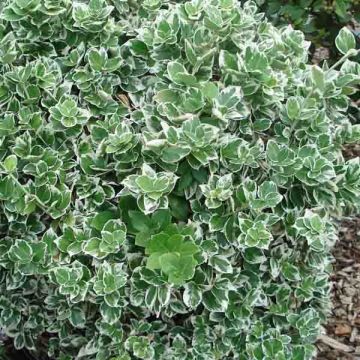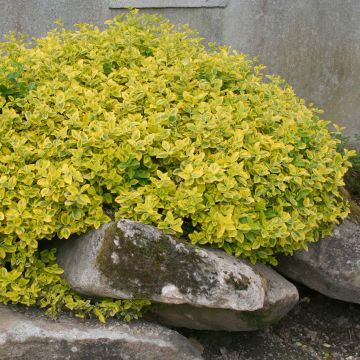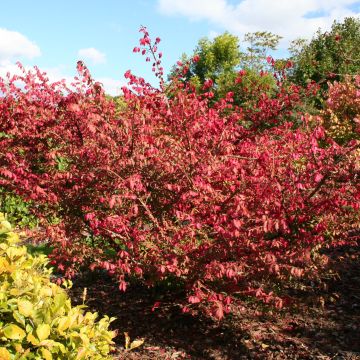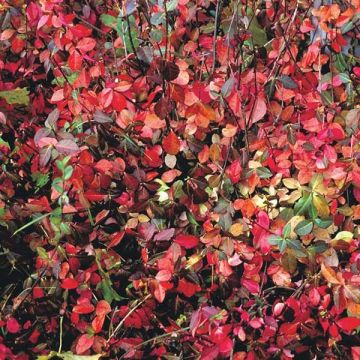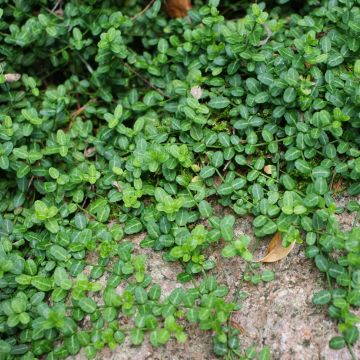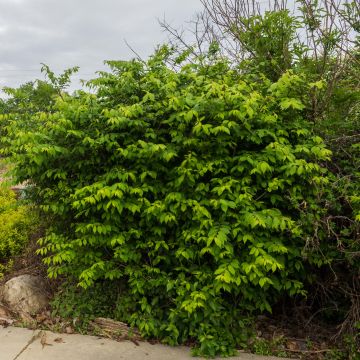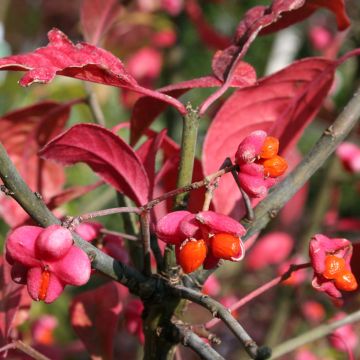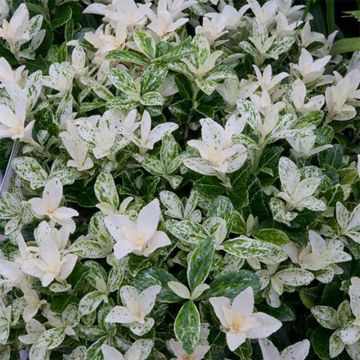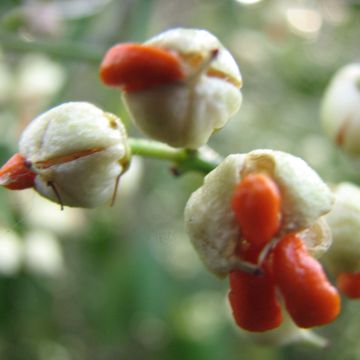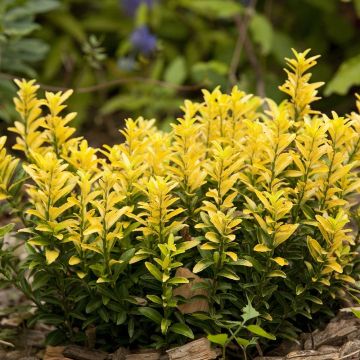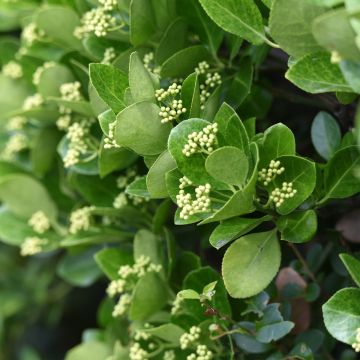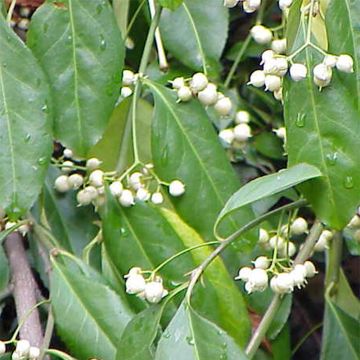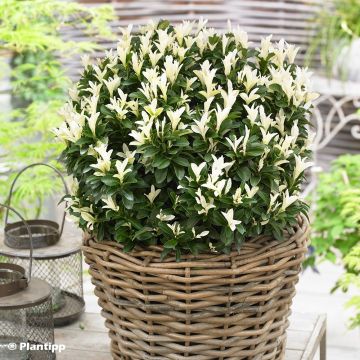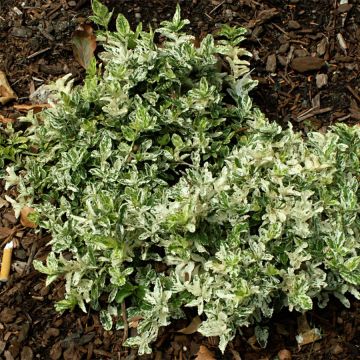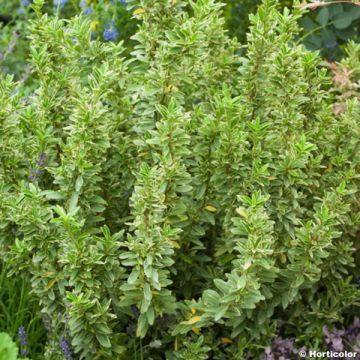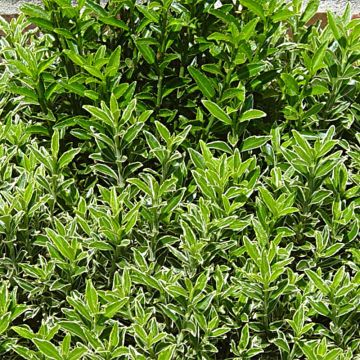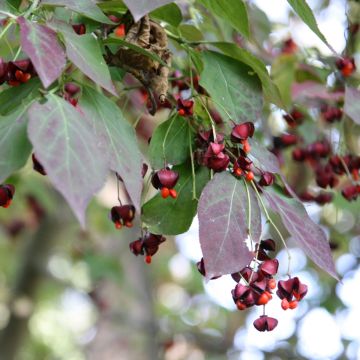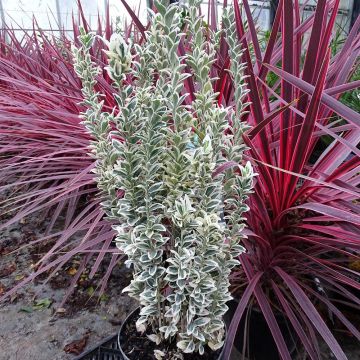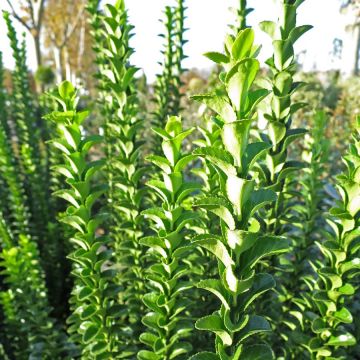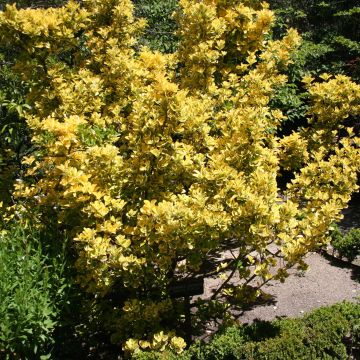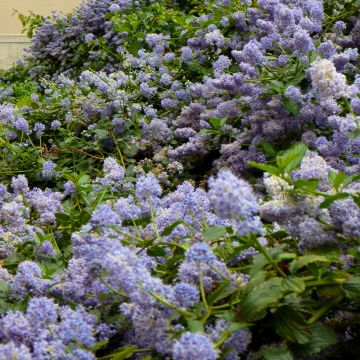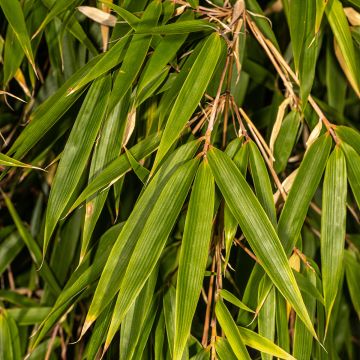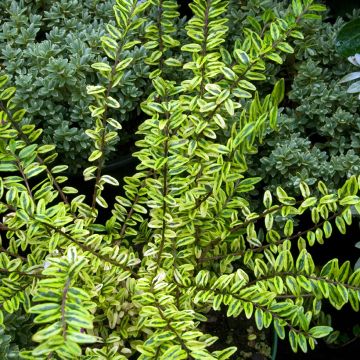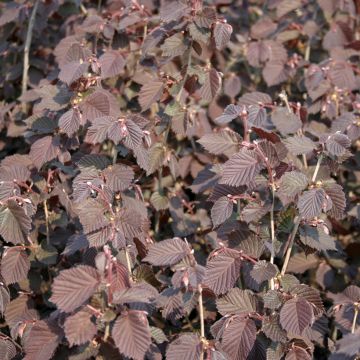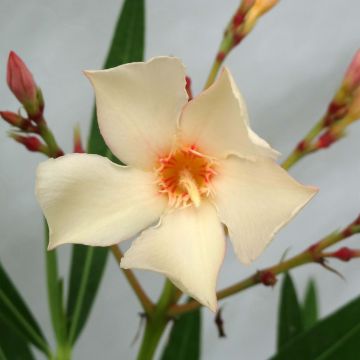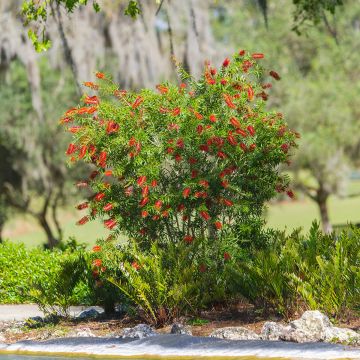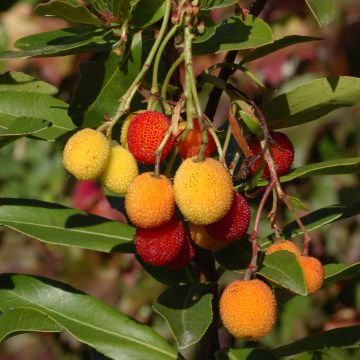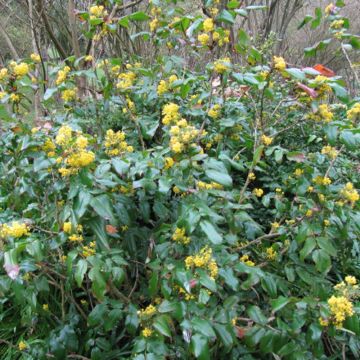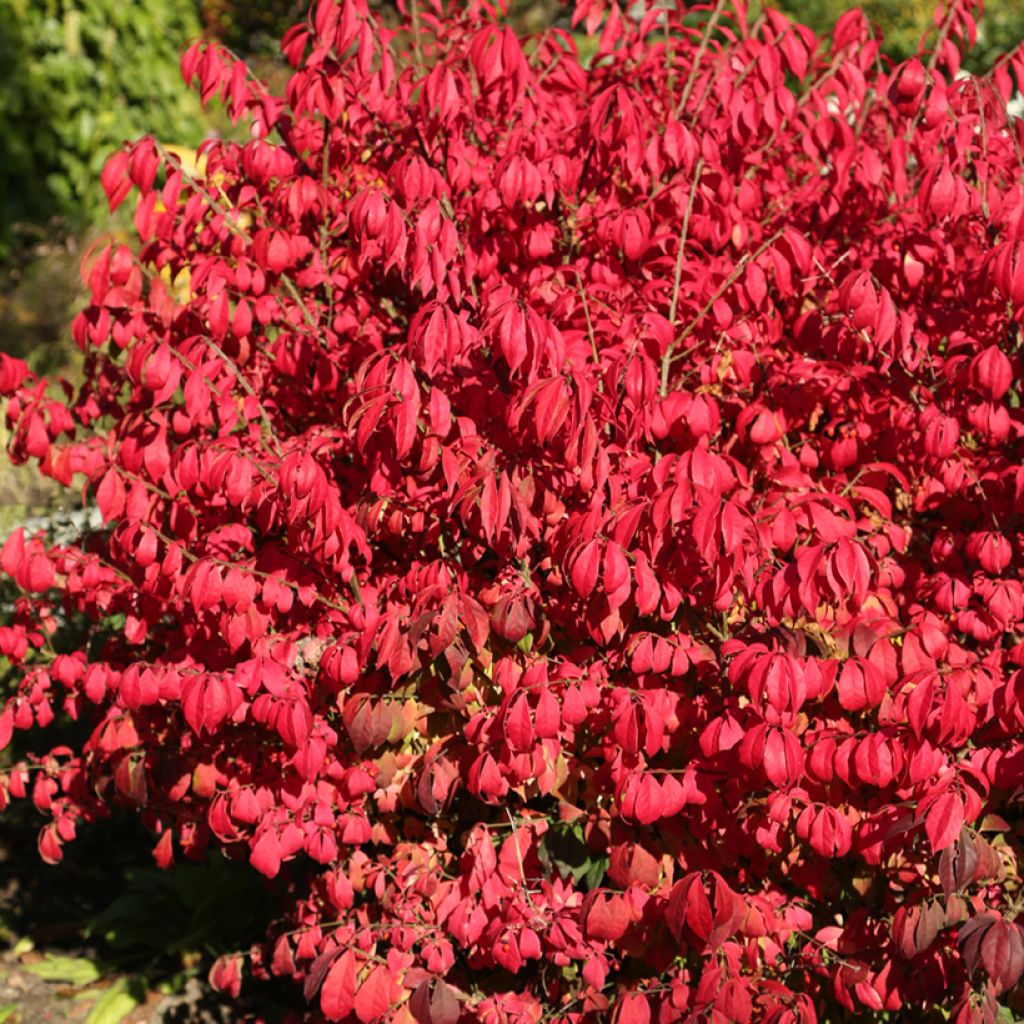

Euonymus alatus Fire Ball
Euonymus alatus Fire Ball
Euonymus alatus Fire Ball®
Winged spindle, winged euonymus, burning bush
Why not try an alternative variety in stock?
View all →This plant carries a 24 months recovery warranty
More information
We guarantee the quality of our plants for a full growing cycle, and will replace at our expense any plant that fails to recover under normal climatic and planting conditions.
From €5.90 for pickup delivery and €6.90 for home delivery
Express home delivery from €8.90.
Does this plant fit my garden?
Set up your Plantfit profile →
Description
Euonymus alatus Fire Ball is a beautiful improvement of the compact winged spindle 'Compactus' that it surpasses with its very bright red autumn foliage, but also in terms of hardiness. It is a small, deciduous shrub with a rounded and dense habit, suitable for gardens of all sizes. Its inconspicuous greenish flowers in spring are followed by characteristic, pink and orange berries, which are also ornamental. Winter reveals its branches adorned with small, thin strips resembling wings, a characteristic that earned it the name Winged Spindle. A shrub that adds tremendous charm to the late season!
The dwarf winged spindle 'Fire Ball' is a recent American horticultural selection distributed by Proven Winners. The species, Euonymus alatus, is native to Asia, specifically central and northern China, Japan, and Korea. It belongs to the Celastraceae family. The slow-growing 'Fire Ball' cultivar reaches a maximum height of 1.50 m. The spherical habit is compact, bushy, wide, highly branched, supported by branches covered with 4 prominent and thin cork bands. The opposite, ovate, simple, 4 to 7 cm long, scalloped leaves are medium green to darker green in summer. They turn bright red and purplish in autumn before falling. In May-June, an insignificant flowering of small white-greenish flowers gives way to red berries that become very decorative at the end of the season. These contain an orange seed, toxic if ingested.
The naturally compact Euonymus alatus 'Fire Ball' will find its place in a bed of modest-sized shrubs or in a large border. It can also be used as a focal point in the centre of a flower bed. Its autumn foliage will be magnificent next to blue-flowered asters or mauve asters. Among shrubs, dwarf barberries offer several varieties with splendid foliage that will enhance it. In a small group, this 'Fire Ball' spindle is eye-catching in autumn, giving depth to the garden.
Tip: In case of severe drought, water to maintain beautiful foliage, even though this highly tolerant shrub withstands hot and dry summers much better than many species known for their drought resistance, provided it has a sufficiently deep, clayey soil.
Report an error about the product description
Plant habit
Flowering
Foliage
Botanical data
Euonymus
alatus
Fire Ball®
Celastraceae
Winged spindle, winged euonymus, burning bush
Euonymus alatus 'Select'
Cultivar or hybrid
Other Euonymus - Spindle tree
Planting and care
Euonymus alatus 'Fire Ball' is best planted in autumn in any well-drained, deep soil, even limestone and clay, in a sunny or lightly shaded position. Pruning is unnecessary. It is better to pinch the young plants to make them more bushy and only remove dead or diseased wood. In poor soil, apply fertiliser twice a year, in early spring and autumn. In case of prolonged drought, especially if the plants are young, water to maintain beautiful foliage. It is proven that this bush, once well established after 2 or 3 years of cultivation, requires no maintenance and can do without watering in summer, even in hot and dry climates, as long as it has sufficiently deep soil to draw some moisture from. It has few enemies and no diseases. Plant several specimens for better fruiting.
Planting period
Intended location
Care
This item has not been reviewed yet - be the first to leave a review about it.
Hedge shrubs
Haven't found what you were looking for?
Hardiness is the lowest winter temperature a plant can endure without suffering serious damage or even dying. However, hardiness is affected by location (a sheltered area, such as a patio), protection (winter cover) and soil type (hardiness is improved by well-drained soil).

Photo Sharing Terms & Conditions
In order to encourage gardeners to interact and share their experiences, Promesse de fleurs offers various media enabling content to be uploaded onto its Site - in particular via the ‘Photo sharing’ module.
The User agrees to refrain from:
- Posting any content that is illegal, prejudicial, insulting, racist, inciteful to hatred, revisionist, contrary to public decency, that infringes on privacy or on the privacy rights of third parties, in particular the publicity rights of persons and goods, intellectual property rights, or the right to privacy.
- Submitting content on behalf of a third party;
- Impersonate the identity of a third party and/or publish any personal information about a third party;
In general, the User undertakes to refrain from any unethical behaviour.
All Content (in particular text, comments, files, images, photos, videos, creative works, etc.), which may be subject to property or intellectual property rights, image or other private rights, shall remain the property of the User, subject to the limited rights granted by the terms of the licence granted by Promesse de fleurs as stated below. Users are at liberty to publish or not to publish such Content on the Site, notably via the ‘Photo Sharing’ facility, and accept that this Content shall be made public and freely accessible, notably on the Internet.
Users further acknowledge, undertake to have ,and guarantee that they hold all necessary rights and permissions to publish such material on the Site, in particular with regard to the legislation in force pertaining to any privacy, property, intellectual property, image, or contractual rights, or rights of any other nature. By publishing such Content on the Site, Users acknowledge accepting full liability as publishers of the Content within the meaning of the law, and grant Promesse de fleurs, free of charge, an inclusive, worldwide licence for the said Content for the entire duration of its publication, including all reproduction, representation, up/downloading, displaying, performing, transmission, and storage rights.
Users also grant permission for their name to be linked to the Content and accept that this link may not always be made available.
By engaging in posting material, Users consent to their Content becoming automatically accessible on the Internet, in particular on other sites and/or blogs and/or web pages of the Promesse de fleurs site, including in particular social pages and the Promesse de fleurs catalogue.
Users may secure the removal of entrusted content free of charge by issuing a simple request via our contact form.
The flowering period indicated on our website applies to countries and regions located in USDA zone 8 (France, the United Kingdom, Ireland, the Netherlands, etc.)
It will vary according to where you live:
- In zones 9 to 10 (Italy, Spain, Greece, etc.), flowering will occur about 2 to 4 weeks earlier.
- In zones 6 to 7 (Germany, Poland, Slovenia, and lower mountainous regions), flowering will be delayed by 2 to 3 weeks.
- In zone 5 (Central Europe, Scandinavia), blooming will be delayed by 3 to 5 weeks.
In temperate climates, pruning of spring-flowering shrubs (forsythia, spireas, etc.) should be done just after flowering.
Pruning of summer-flowering shrubs (Indian Lilac, Perovskia, etc.) can be done in winter or spring.
In cold regions as well as with frost-sensitive plants, avoid pruning too early when severe frosts may still occur.
The planting period indicated on our website applies to countries and regions located in USDA zone 8 (France, United Kingdom, Ireland, Netherlands).
It will vary according to where you live:
- In Mediterranean zones (Marseille, Madrid, Milan, etc.), autumn and winter are the best planting periods.
- In continental zones (Strasbourg, Munich, Vienna, etc.), delay planting by 2 to 3 weeks in spring and bring it forward by 2 to 4 weeks in autumn.
- In mountainous regions (the Alps, Pyrenees, Carpathians, etc.), it is best to plant in late spring (May-June) or late summer (August-September).
The harvesting period indicated on our website applies to countries and regions in USDA zone 8 (France, England, Ireland, the Netherlands).
In colder areas (Scandinavia, Poland, Austria...) fruit and vegetable harvests are likely to be delayed by 3-4 weeks.
In warmer areas (Italy, Spain, Greece, etc.), harvesting will probably take place earlier, depending on weather conditions.
The sowing periods indicated on our website apply to countries and regions within USDA Zone 8 (France, UK, Ireland, Netherlands).
In colder areas (Scandinavia, Poland, Austria...), delay any outdoor sowing by 3-4 weeks, or sow under glass.
In warmer climes (Italy, Spain, Greece, etc.), bring outdoor sowing forward by a few weeks.


































